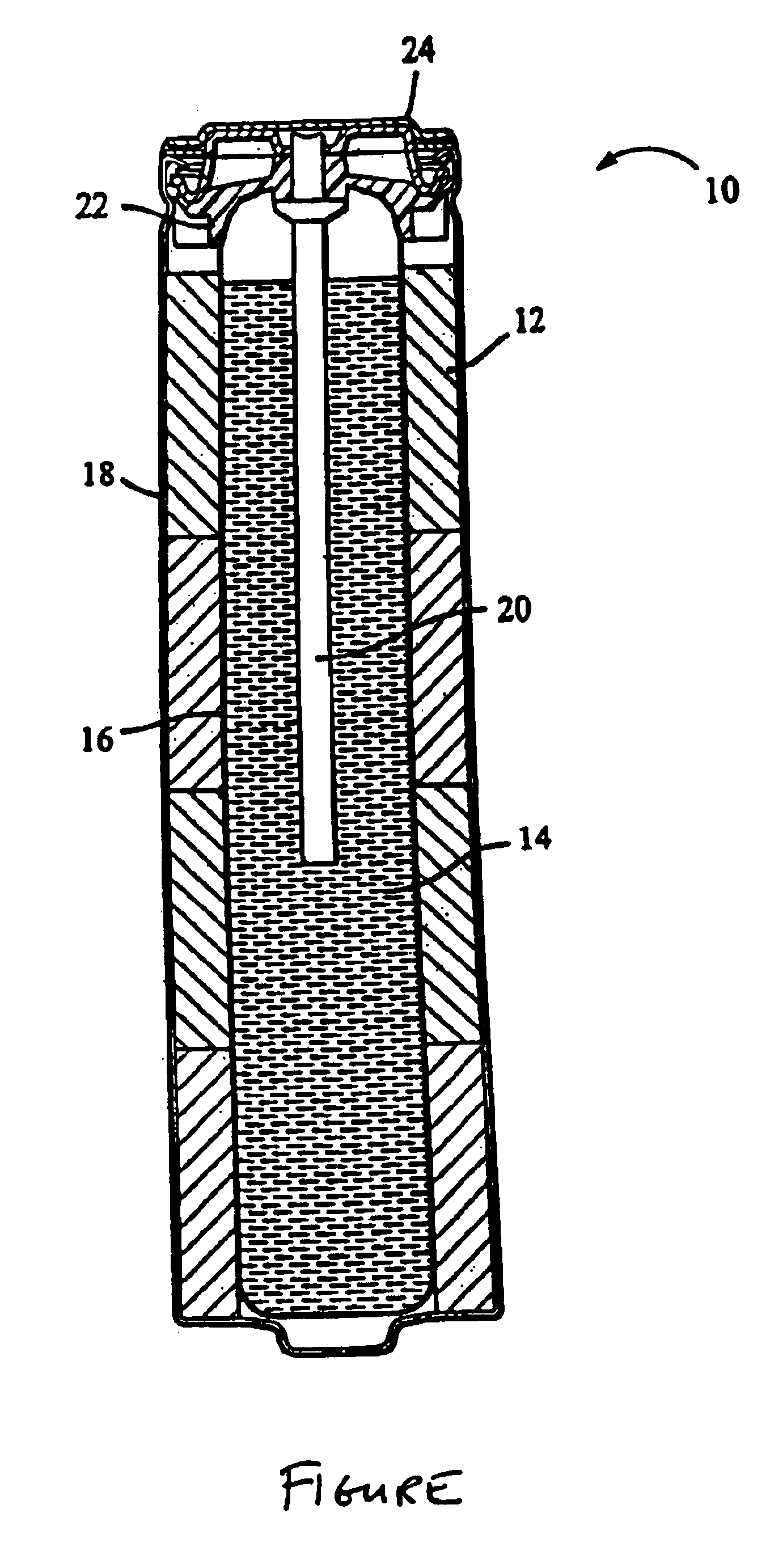Battery cathode
a battery cathode and battery technology, applied in the field of batteries, can solve the problem that the quantity of manganese dioxide that can be included in the cathode is limited in part, and achieve the effects of enhancing conductivity and fibrous morphology, high electrical conductivity, and high conductivity
- Summary
- Abstract
- Description
- Claims
- Application Information
AI Technical Summary
Benefits of technology
Problems solved by technology
Method used
Image
Examples
example
An example of battery 10 (AA) was prepared according to the following procedure.
The cathode included about 10.35 grams of manganese dioxide (Kerr McGee), 0.345 grams (3% by weight) of carbon fibers (Applied Sciences), about 0.65 g of 9N KOH solution, and about 0.3 weight percent of coathylene HA-1681. The anode included about 4.5 grams of zinc particles, about 3.4 grams of 36% KOH, about 1260 ppm surfactant (RM 510, Rhone Poulenc) relative to zinc, about 1.96 gram 9N KOH (with 2% dissolved ZnO), and about 1.6 weight percent total gelling agent (Carbopol 940 and A221).
The separator can be formed of one layer or two layers of non-woven, non-membrane material with one layer being disposed along a surface of the other. To minimize the volume of separator, each layer of non-woven, non-membrane material had a basic weight of about 54 grams per square meter, a thickness of about 5.4 mils when dry and a thickness of about 10 mils when wet. The anode also included about 3.17 grams of an aque...
PUM
 Login to View More
Login to View More Abstract
Description
Claims
Application Information
 Login to View More
Login to View More - R&D
- Intellectual Property
- Life Sciences
- Materials
- Tech Scout
- Unparalleled Data Quality
- Higher Quality Content
- 60% Fewer Hallucinations
Browse by: Latest US Patents, China's latest patents, Technical Efficacy Thesaurus, Application Domain, Technology Topic, Popular Technical Reports.
© 2025 PatSnap. All rights reserved.Legal|Privacy policy|Modern Slavery Act Transparency Statement|Sitemap|About US| Contact US: help@patsnap.com


